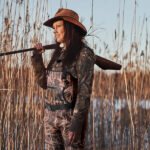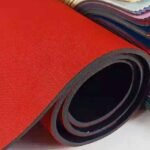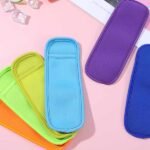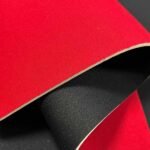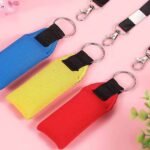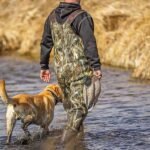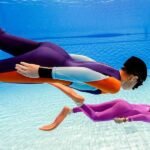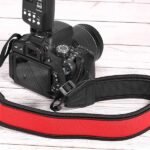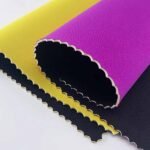When it comes to outfitting your canine companion for outdoor adventures—from hiking through misty trails to splashing in lakes and rivers—neoprene dog vests have surged in popularity. These versatile vests combine thermal insulation, buoyancy, and abrasion resistance in a lightweight package, keeping your pup warm, safe, and visible in any environment. But with so many options on the market, how do you separate the “best neoprene dog vest” from the rest?
A best neoprene dog vest should offer durable 3–5 mm neoprene construction, adjustable straps for a snug fit, integrated handles for easy lifting, reflective trim for visibility, and machine-washable fabrics to ensure both comfort and longevity.
From understanding neoprene grades to ensuring the perfect custom fit—and even exploring OEM/ODM branding opportunities—this guide dives deep into everything you need to know to choose, maintain, and customize the ultimate neoprene vest for your dog. So buckle up, leash in hand, and follow our step-by-step exploration as we uncover what makes a neoprene dog vest truly the best choice for you and your four-legged adventurer.
Whether you’re a seasoned hunter, a weekend paddler, or simply someone who demands the highest quality for your pet, this guide will equip you with the insights to make an informed decision—and show you how partnering with Szoneier can get you private-label or fully customized vests that stand out in functionality and style.
What Makes a Neoprene Dog Vest the Best Choice for Your Pet?

A top-rated neoprene dog vest delivers thermal insulation to retain body heat, buoyancy for water safety, abrasion resistance against rough terrain, and ergonomically placed handles and clips. Its stretchy, form-fitting design ensures freedom of movement while preventing chafing—making it the ideal all-in-one solution for dogs who thrill-seek in both land and water environments.
Neoprene vests for dogs evolved out of the scuba-diving industry, where neoprene’s closed-cell foam structure traps a thin layer of water warmed by the wearer’s body. For dogs, this translates to reliable thermal protection, essential in cold lakes or early-morning hunts. Unlike conventional nylon or canvas vests, neoprene maintains flexibility even when wet, ensuring dogs can still run, swim, and jump unencumbered.
Critically, buoyancy is not just a “nice-to-have”—it can be life-saving. Many vests incorporate flotation panels of varying densities (often rated in Newtons of lift) to keep dogs afloat, reducing drowning risk in deep water. Top manufacturers calibrate foam thickness—typically 3 mm for flexibility and 5 mm for maximum warmth—to balance insulation and buoyancy.
Abrasion resistance is another hallmark. When traversing rocky riverbeds or wooded trails, a neoprene vest with a reinforced chest panel (often rubberized or coated 600D Oxford fabric) prevents tears and punctures. Ergonomic chest and under-belly straps distribute pressure evenly, avoiding hotspots and chafing. Reflective piping or high-contrast colors increase visibility at dawn, dusk, or in dense brush.
Beyond material specs, the “best” vest differentiates itself through fit adjustability: multi-directional hook-and-loop or quick-release buckles let you fine-tune tension around the neck, girth, and torso. Well-designed grab handles near the shoulder blades facilitate rescue pulls or assist elderly dogs. Metal D-rings for leash attachment—positioned to avoid neck torque—add convenience for land-based walks.
Finally, user-centric features like machine-washable panels, quick-dry linings, and odor-resistant coatings extend product lifespan. Szoneier’s customizable offerings ensure you can pick the ideal neoprene grade, hardware options, and private-label branding—giving you the best neoprene dog vest tailored to your unique needs.
Which Are the Best Neoprene Dog Vests on the Market Right Now?

Our top picks for 2025 include the GF Pet Dog Life Jacket, Ruffwear Float Coat, EzyDog DFD X2 Boost, Momarsh Versa-Vest, and Baydog Monterey Bay. Each offers unique combinations of neoprene thickness, flotation ratings, ergonomic fit, and visibility features, catering to different budgets and activity profiles.
| Model | Neoprene Thickness | Size Range | Flotation Rating | Key Feature |
|---|---|---|---|---|
| GF Pet Dog Life Jacket | 3 mm | XXS–XL | 12 N | Chin flotation flap, ergonomic fit |
| Ruffwear Float Coat | 4 mm | XXS–XL | 15 N | Gaia® foam, reflective trim |
| EzyDog DFD X2 Boost | 5 mm | XS–XL | 18 N | Fixed-collar adjustment, low-profile |
| Momarsh Versa-Vest | 5 mm | 35–100+ lbs | 14 N | Multi-directional adjustability |
| Baydog Monterey Bay Offshore | 5 mm | XS–XL | 16 N | 600D Oxford reinforcement |
- GF Pet Dog Life Jacket: An affordable pick at $40–60, it combines soft neoprene and nylon panels. The unique chin flap keeps a dog’s head above water, while side-entry buckles ensure a snug, quick fit. Ideal for small to large breeds needing basic flotation and comfort.
- Ruffwear Float Coat: A premium silhouette at $90–110, featuring Gaia® foam and reflective accents. Its tailored fit allows full swimming motion without hindrance. A robust grab handle and leash-clip under the handle make rescue and control effortless.
- EzyDog DFD X2 Boost: At $80–100, it boasts a streamlined ergonomic profile with ultra-buoyant foam strategically placed around the torso and underbelly. The fixed-collar system ensures one-time adjustment, while internal webbing hides straps to avoid irritation.
- Momarsh Versa-Vest: Priced $100–120, this vest emphasizes adaptability: six points of multi-directional hook-and-loop adjustments fit 35–100+ lb dogs without measuring. Veterinarian-engineered, with a rubberized chest panel for rugged protection.
- Baydog Monterey Bay Offshore: ($70–90) Blends 5 mm neoprene with a water-repellent 600D oxford fabric. A split-strap design and added flotation panels offer both flexibility and buoyancy, backed by a sturdy top handle.
These top models illustrate the spectrum of “best” vests—ranging from budget-friendly to fully featured premium options. When selecting, match the vest’s flotation rating and neoprene thickness to your dog’s size, water activity intensity, and operating environment. Budget picks excel for occasional paddlers, while advanced vests reward serious adventurers with ergonomic design and heavy-duty materials.
Which Neoprene Grades and Fabric Constructions Offer the Best Performance?
Single-lined neoprene (3 mm) is lightweight and highly flexible, while double-lined (5 mm) excels in warmth and buoyancy. Laminated or dope-dye finishes improve UV resistance and colorfastness. Reinforced panels—such as 600D Oxford overlays—enhance abrasion resistance for rugged use.
Neoprene grades vary primarily by thickness and lining. 3 mm single-lined neoprene is best suited for moderate climates and dogs requiring maximum mobility. It provides enough insulation for summer-lake swims while allowing easy range of motion on land. However, its buoyancy is lower—often around 10 N—making it less ideal for deep-water safety in strong currents.
5 mm double-lined neoprene, by contrast, traps more body heat and delivers buoyancy upwards of 15–18 N. This grade is favored by professional water-retrieval trainers and hunters operating in colder conditions. The trade-off is increased bulk and slight stiffness, which some dogs adapt to quickly but must be assessed on a case-by-case basis.
Fabric constructions also influence performance:
- Dope-dye neoprene: Uses pigment infusion for colorfastness and reduces environmental impact. Dope-dye maintains color integrity better than surface-printed fabrics, which can peel or fade over time.
- Laminated neoprene: Sandwiches foam between protective face fabrics (e.g., nylon or polyester), boosting durability and abrasion resistance. Laminates with a water-repellent coating shed moisture quickly—ideal for dogs that repeatedly enter and exit water.
- Coated panels (600D Oxford or ballistic nylon): Often placed over the chest and belly to prevent tears from brush, barnacles, or hunting gear. This hybrid design extends vest lifespan dramatically compared to plain neoprene.
Seams and adhesives matter too. High-quality vests use blind-stitched and glued seams, preventing water intrusion and retaining buoyancy foam integrity. Budget vests may rely on simple overlock stitching, which can unravel when exposed to sun and saltwater.
When evaluating “best” materials, consider use-case specifics: a paddle-boarding dog needs superior buoyancy and UV protection, while a hunting dog prioritizes camouflage prints and abrasion-resistant panels. Szoneier’s R&D can tailor neoprene thickness, lining, and external fabrics to your precise requirements—ensuring your vest delivers optimal performance for its intended environment.
How Do You Measure and Fit Your Dog for the Best Neoprene Vest?

Accurate measurements—neck circumference, chest girth (widest point behind front legs), and body length (base of neck to dock)—ensure a secure, comfortable fit. Consult manufacturer size charts, allow two-finger gaps under straps, and adjust buckles to prevent restriction or slippage.
A proper fit is the cornerstone of vest performance. An ill-fitting neoprene vest can chafe, restrict movement, or slip off in water, negating built-in safety features. Follow these steps:
- Neck Circumference: Use a flexible tape measure around the base of the neck, just above the shoulders. Record the measurement without pulling tight—let the tape rest lightly on fur.
- Chest Girth: Measure at the widest point, immediately behind the dog’s front legs. Ensure the dog is standing squarely; have a helper hold treats to keep your dog upright.
- Body Length: From the withers (base of the neck) to the base of the tail. Resist including tail length, as vest coverage should stop before the tail for freedom of motion.
With these metrics, consult the vest’s size chart. When trying on:
- Two-Finger Rule: You should be able to slide two fingers between the vest strap and your dog’s body. This guarantees it’s snug but not constrictive.
- Adjustment Check: Adjust buckles progressively—tighten until the vest stays put when you lift the dog by its handle, but not so tight that you cause breathing difficulty.
- Freedom of Movement: Encourage your dog to walk, run, and shake. Watch for rubbing at the armpits or around the neck. If you see red marks, loosen straps or switch to a larger size.
- Water Test: Whenever possible, trial the vest in shallow water. Ensure it doesn’t ride up around the neck or pinch under the belly when buoyant.
Different vest models may place adjustment straps differently—some under the belly, some at the shoulders. Familiarize yourself with each design. Szoneier’s OEM/ODM service includes custom sizing parameters: if your dog falls between standard sizes, Szoneier can tweak panel dimensions and strap placements to create a bespoke vest that fits flawlessly the first time—eliminating guesswork and returns.
Do Neoprene Dog Vests Deliver the Best Protection—Thermal, Buoyancy, and UV?
Premium neoprene vests combine closed-cell foam for thermal R-values up to 1.5, buoyancy panels rated 12–18 N, and UV-resistant coatings (UPF 50+) to shield skin and fabric from sun damage—offering comprehensive protection in diverse environments.
Thermal Insulation
Neoprene’s closed-cell foam structure traps a layer of water warmed by the dog’s body heat, yielding R-values between 0.8 and 1.5 depending on thickness. A 3 mm vest maintains core temperature in spring and autumn, while 5 mm vests are preferable for winter swims or cold lakes. Avoid cotton liners—they retain water and accelerate heat loss.
Buoyancy Ratings
Flotation effectiveness is expressed in Newtons (N). For example, a 12 N rating offers basic flotation for small breeds, while 15–18 N suits medium to large dogs. Higher ratings improve head-up posture in turbulent water, reducing exhaustion and drowning risk. Balance buoyancy with flexibility: over-buoyant vests can flip a dog belly-up, so manufacturers strategically place foam panels around the torso.
UV Protection
Neoprene inherently resists UV degradation better than nylon or polyester alone, but external coatings and face fabrics can further block UV rays. Look for UPF 50+ ratings on laminated face fabrics—this prevents sunburn on a dog’s belly and reflective fading of the vest’s color.
Abrasion & Impact Resistance
Rugged use—such as retrieving in rocky creeks—demands reinforced panels. Rubberized chest shields guard against sharp edges, while 600D or 1200D Oxford overlays absorb impact without sacrificing flexibility. Seam reinforcements (blind-stitched and glued) ensure structural integrity under stress.
Chemical & Saltwater Resistance
High-quality neoprene and adhesives resist breakdown from chlorine and saltwater exposure. Industrial-grade neoprene grades (like Limestone-based neoprene) maintain flexibility after repeated dips, while petroleum-based variants may become brittle. Szoneier sources premium limestone-based neoprene for optimum longevity.
In sum, the best neoprene dog vests integrate balanced thermal insulation, targeted buoyancy, UV-resistant treatments, and abrasion-resistant reinforcements. Critical evaluation of R-values, Newton ratings, and fabric constructions will guide your choice—keeping your dog safe, comfortable, and stylish in all conditions.
How Should You Clean and Maintain Your Best Neoprene Dog Vest?

Hand-wash with mild detergent in cold water, rinse thoroughly, then air-dry away from direct sun. Avoid bleach, fabric softeners, and high-heat dryers. Perform quarterly seam inspections and reapply water-repellent treatments annually for lasting performance.
Neoprene vests require specific care to preserve foam integrity, adhesives, and external fabrics:
- Washing
- Hand-wash Cold: Fill a basin with cold water and a small amount of neoprene-safe detergent. Submerge the vest, gently agitate to release dirt and oils, then rinse until water runs clear.
- Machine Wash (If Allowed): Use a front-load machine on gentle cycle, placed inside a mesh laundry bag to prevent buckles from snagging. Always select cold water and no spin-dry cycle.
- Detergents
- Choose pH-neutral, non-biological detergents free of bleach and fabric softeners. Harsh chemicals can break down neoprene foam and weaken seam adhesives.
- Drying
- Air Dry: Lay flat on a drying rack or hang on a wide hanger in a shaded, well-ventilated area. Keep out of direct sunlight to prevent UV degradation.
- Avoid Heat: Never tumble-dry, iron, or place near radiators; high heat will warp foam cells and weaken glues.
- Storage
- Flat or Hung: Store flat or lightly hung to avoid creases. Keep in a cool, dry place.
- Loosely Fastened: Close fasteners to prevent hook-and-loop straps from attracting lint, but don’t over-tighten.
- Repairs & Inspections
- Seam Checks: Quarterly inspection for loose threads or separating seams. Small splits can be re-glued with neoprene adhesive following manufacturer instructions.
- Panel Wear: Monitor abrasion-resistant overlays for thinning; replace panels or upgrade models as needed.
- Water-Repellent Treatments
- After 6–12 months of heavy use, refresh the vest’s DWR (durable water repellent) finish with a spray-on neoprene or textile-safe treatment to maintain quick-dry performance.
Proper maintenance not only extends vest life—often beyond three years for high-end models—but also ensures flotation foam and fabrics perform as intended. For commercial clients or private-label customers, Szoneier offers pre-treatment of DWR coatings and post-shipment care kits, ensuring your “best neoprene dog vest” arrives ready for immediate use and remains in peak condition season after season.
Are Custom “Best” Options Available for OEM/ODM Neoprene Dog Vests?
Yes—Szoneier provides low-MOQ custom services, including private-label logos via embroidery or screen-print, Pantone color matching, custom hardware (buckles, D-rings), and tailored panel designs. 100% quality assurance, free design support, and fast sampling streamline your path from concept to finished product.
For brands seeking proprietary neoprene dog vests under their own label, customization is essential:
- Branding Methods
- Embroidery: Offers a premium, tactile logo finish. Best suited to thicker panels away from high-flex areas to prevent stitch pull-through.
- Screen-Print: Economical for complex, multi-color logos. Utilizes neoprene-compatible ink that flexes with the foam.
- Heat Transfer & Silicone Patches: Alternative for high-detail or 3D effects; consider placement to avoid peel-off in high-stretch zones.
- Color & Pattern
- Szoneier supports full Pantone matching for both neoprene foam and laminated face fabrics. Camouflage patterns—like Optifade or Mossy Oak—can be printed in-house using dope-dye or digital lamination processes.
- Hardware Customization
- Buckles: Choose from UTX®, Duraflex®, or custom-injection designs.
- D-Rings & Handles: Metal vs. plastic, anodized finishes, or biothane-wrapped grab handles for added grip and comfort.
- Panel & Strap Configuration
- Modify strap counts, widths, and anchor points to match breed-specific shapes (e.g., deep-chested vs. narrow-chested breeds).
- Add reflective piping or CNC-cut vent holes for breathability in hot climates.
- Low-MOQ & Sampling
- Szoneier’s low-MOQ policy (as few as 50 pieces) lets small brands test market response before scaling production. Sample lead times of 5–7 days enable rapid prototyping, complete with logo and hardware.
- Quality Assurance
- 100% product inspection—covering seam strength, foam density, and hardware load testing—ensures every vest meets defined performance benchmarks.
- Certificates (ISO 9001, RoHS) accompany shipments for global compliance needs.
By leveraging Szoneier’s OEM/ODM services, you—not only secure the “best neoprene dog vest” tailored to your specifications—but also benefit from streamlined design, prototyping, and production workflows. This holistic approach makes private-label vest lines affordable, high-quality, and market-responsive.
How Do You Choose the Best Neoprene Dog Vest Supplier?
Assess suppliers on minimum order quantity (MOQ), sample lead times, customization capabilities, quality certifications, and 100% QA commitments. Transparent communication, stable production capacity, and post-sale support—including care kits and technical guides—distinguish top vendors like Szoneier.
Selecting the right supplier is as critical as choosing the right vest design:
- Minimum Order Quantity (MOQ)
- A low MOQ (50–100 pcs) reduces upfront risk for small brands. Beware suppliers demanding thousands in a first run. Szoneier’s 50-piece MOQ enables agile market testing.
- Sampling & Lead Times
- Rapid prototyping (5–7 days) allows you to validate branding, fit, and materials before bulk commitment. Confirm whether sampling costs roll into bulk pricing.
- Customization Range
- The best suppliers support everything from logo placement to neoprene grade selection and hardware sourcing. Limited-service vendors often restrict you to predefined SKUs with static branding.
- Quality Certifications
- ISO 9001 for process control, RoHS for chemical safety, and SGS for material testing provide peace of mind—especially when exporting to regulated markets.
- Production Capacity & Stability
- Year-round capacity of 100,000+ vests per month prevents delays during peak seasons. Szoneier’s multiple factory locations ensure consistent output and backup lines.
- Technical Support & After-Sales Service
- Detailed care guides, warranty policies, and direct-line technical reps help solve issues swiftly. Post-sale service—including replacement parts and re-coating kits—extends product life cycle.
- Cost Transparency
- Clear breakdowns of raw materials, labor, tooling, and logistics avoid hidden fees. Confirm freight terms (EXW, FOB, CIF) and customs support for smooth delivery.
By weighting these factors, you ensure your partnership yields consistently high-quality, on-time neoprene dog vests that delight end users. Szoneier’s blend of low-MOQ flexibility, robust customization, full QA, and certified processes makes it an ideal choice for businesses seeking the “best” in performance and reliability.
What Market Trends Are Shaping the Future of Neoprene Dog Vest Demand?
Rising pet-owner willingness to invest in premium gear, demand for eco-friendly limestone-based neoprene, integration of smart textiles (cooling gel inserts), and growth of private-label offerings are driving innovation in neoprene dog vests.
Several key trends are reshaping the neoprene dog vest landscape:
- Premiumization & Experience Economy
- Pet owners increasingly view pets as family, spending more on high-end gear. This fuels demand for vest features once reserved for human wetsuits—like ExoSkin coatings and anatomical paneling.
- Sustainability
- Limestone-based neoprene (as opposed to petroleum-based) reduces carbon footprint. Recyclable dope-dye processes and bluesign®-approved face fabrics appeal to eco-conscious consumers. Szoneier’s R&D focuses on greener neoprene formulations.
- Smart Textile Integration
- Cooling gel inserts and phase-change materials (PCM) regulate temperature in hot climates. UV-reactive reflective panels enhance nighttime visibility. These innovations position neoprene vests at the intersection of safety and tech.
- Customization & Private-Label Growth
- Direct-to-consumer pet brands seek unique offerings. Low-MOQ private-label runs allow emerging brands to differentiate with custom prints, hardware, and fit profiles.
- Multi-Function Designs
- Hybrid vests that double as harnesses or flotation devices with modular attachments (e.g., GPS trackers, medical-alert badges) are gaining traction—reflecting the broader trend toward multifunctional pet gear.
- Digital Marketing & E-Commerce
- SEO optimizations around “best neoprene dog vest 2025,” social media influencer reviews, and targeted Google Shopping campaigns are key for brands to capture informed buyers. Content-driven SEO—like this guide—boosts organic visibility and engagement.
By staying ahead of these trends—through material innovation, sustainable practices, and digital marketing savvy—Szoneier partners can launch next-generation neoprene vests that resonate with both retailers and end consumers.
Conclusion
From material science to ergonomic design, from off-the-shelf models to fully customized private-label solutions, neoprene dog vests represent a high-performance, multifunctional category with robust growth potential. Whether you’re a retailer, professional outfitter, or pet-gear entrepreneur, choosing the best neoprene vest requires understanding foam grades, fit protocols, safety ratings, and supplier capabilities.
Ready to bring the ultimate neoprene dog vest to your lineup? Contact Szoneier today for a free consultation, rapid sampling, and a detailed quotation tailored to your branding and performance requirements. Let’s craft the “best neoprene dog vest” that keeps every canine customer safe, comfortable, and stylish—wherever their adventures take them.



